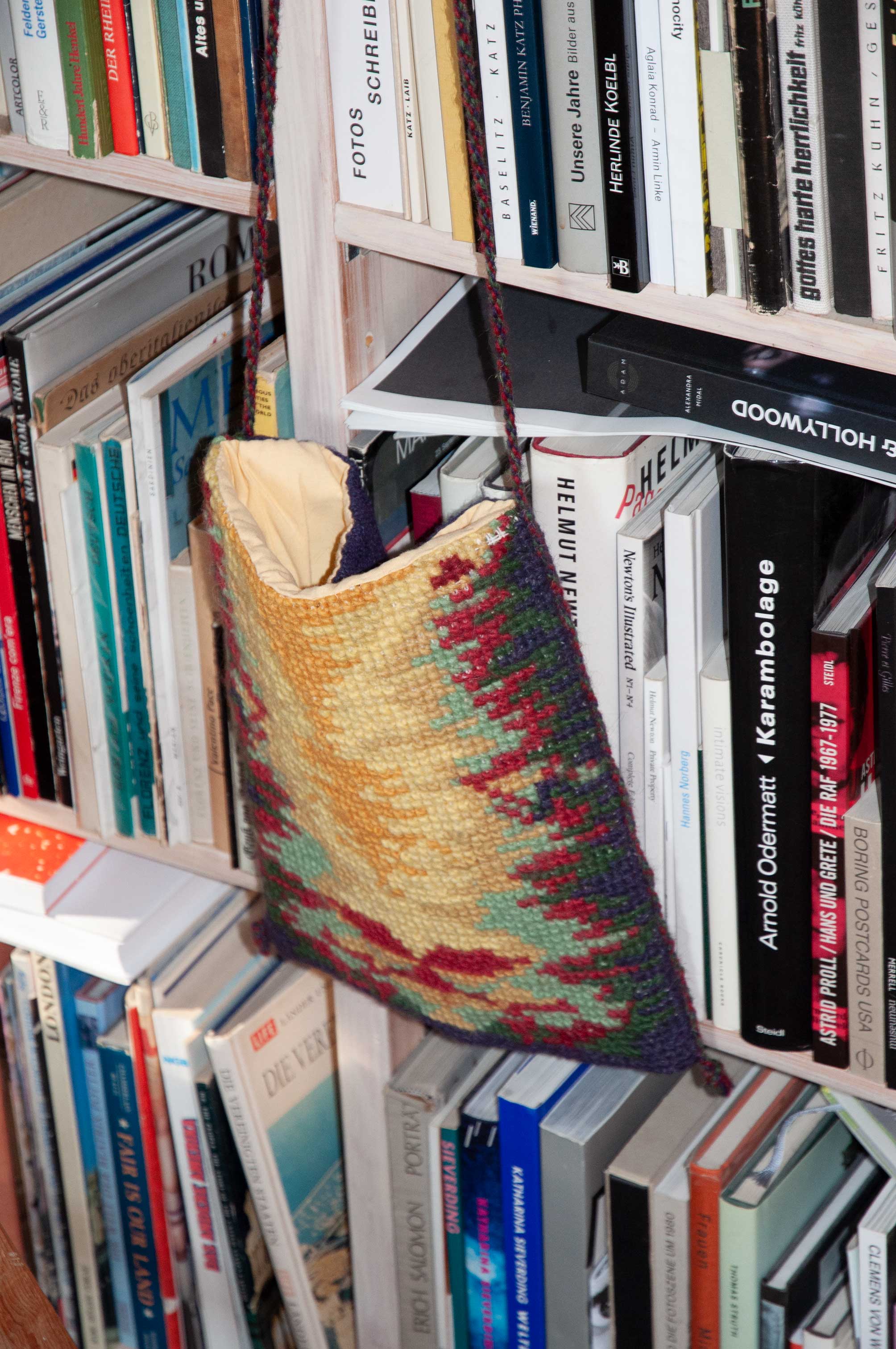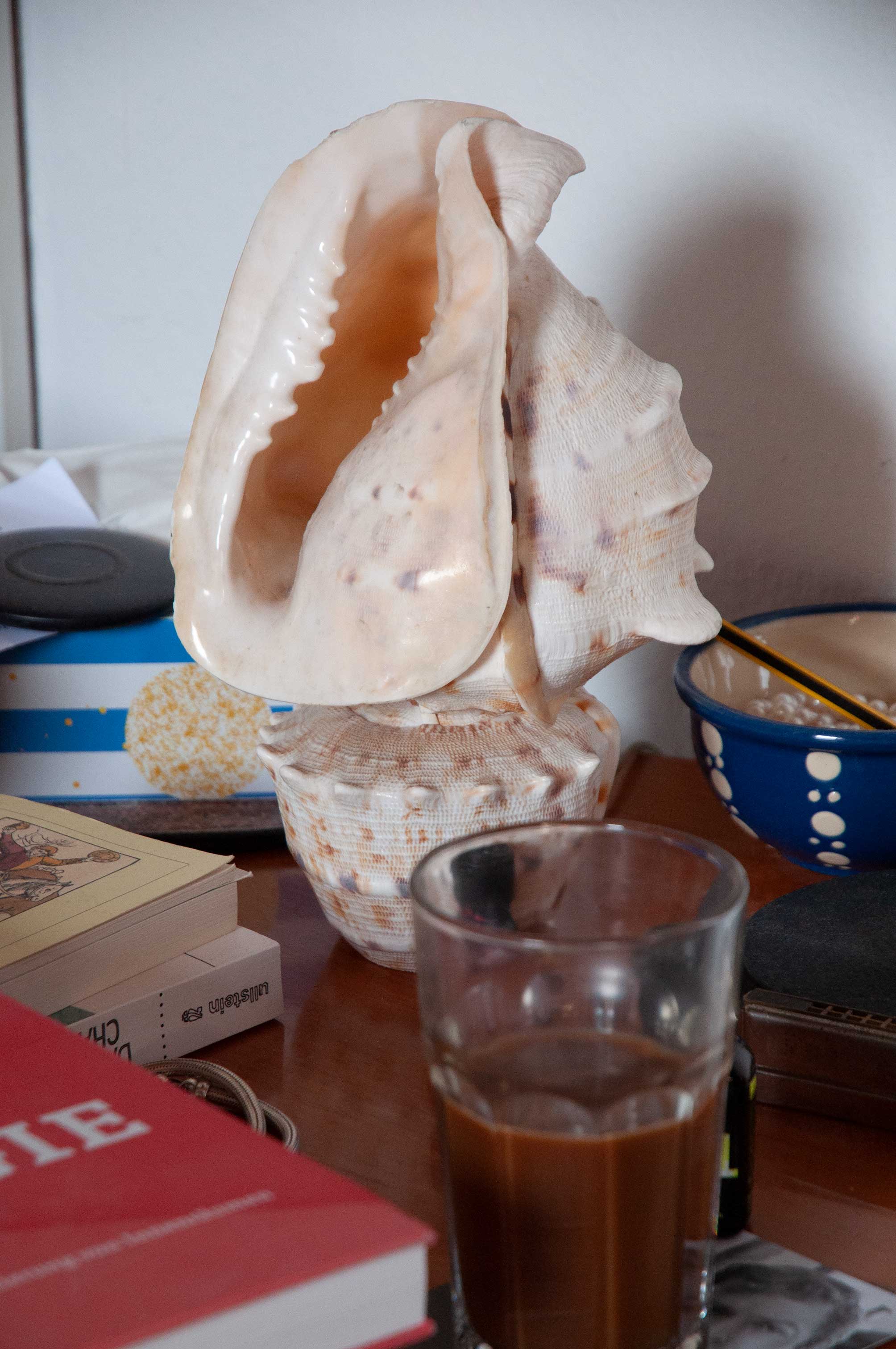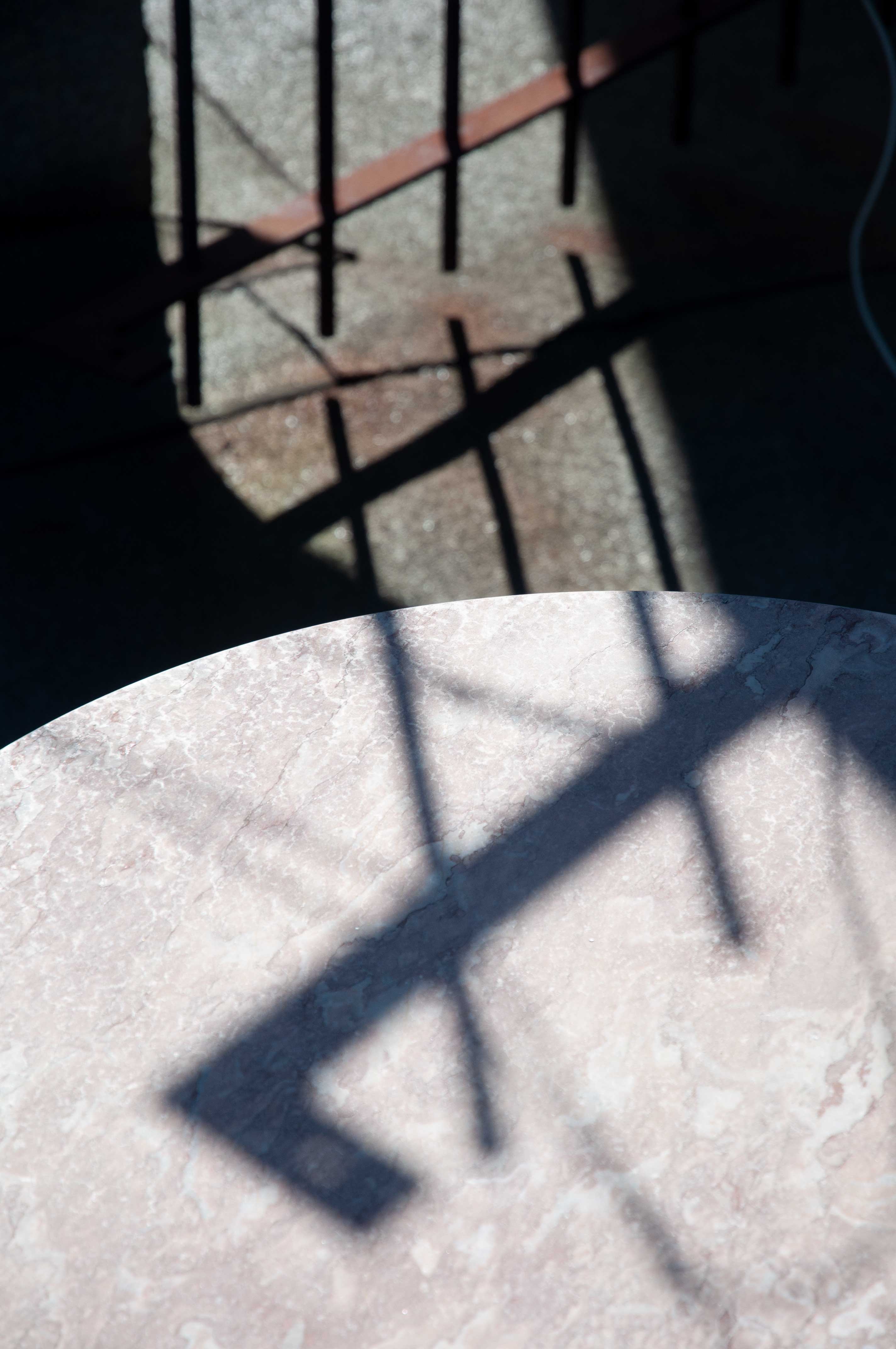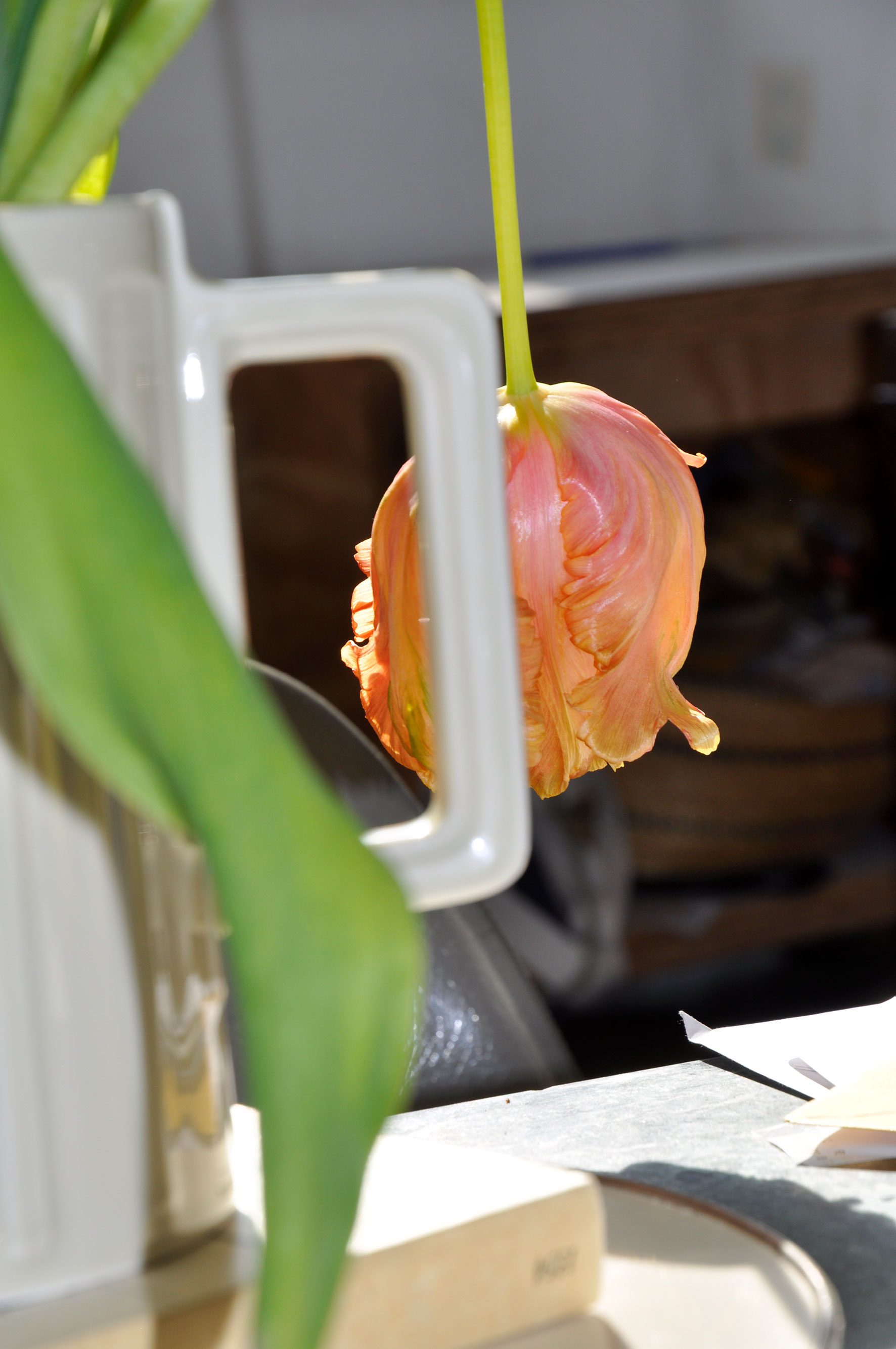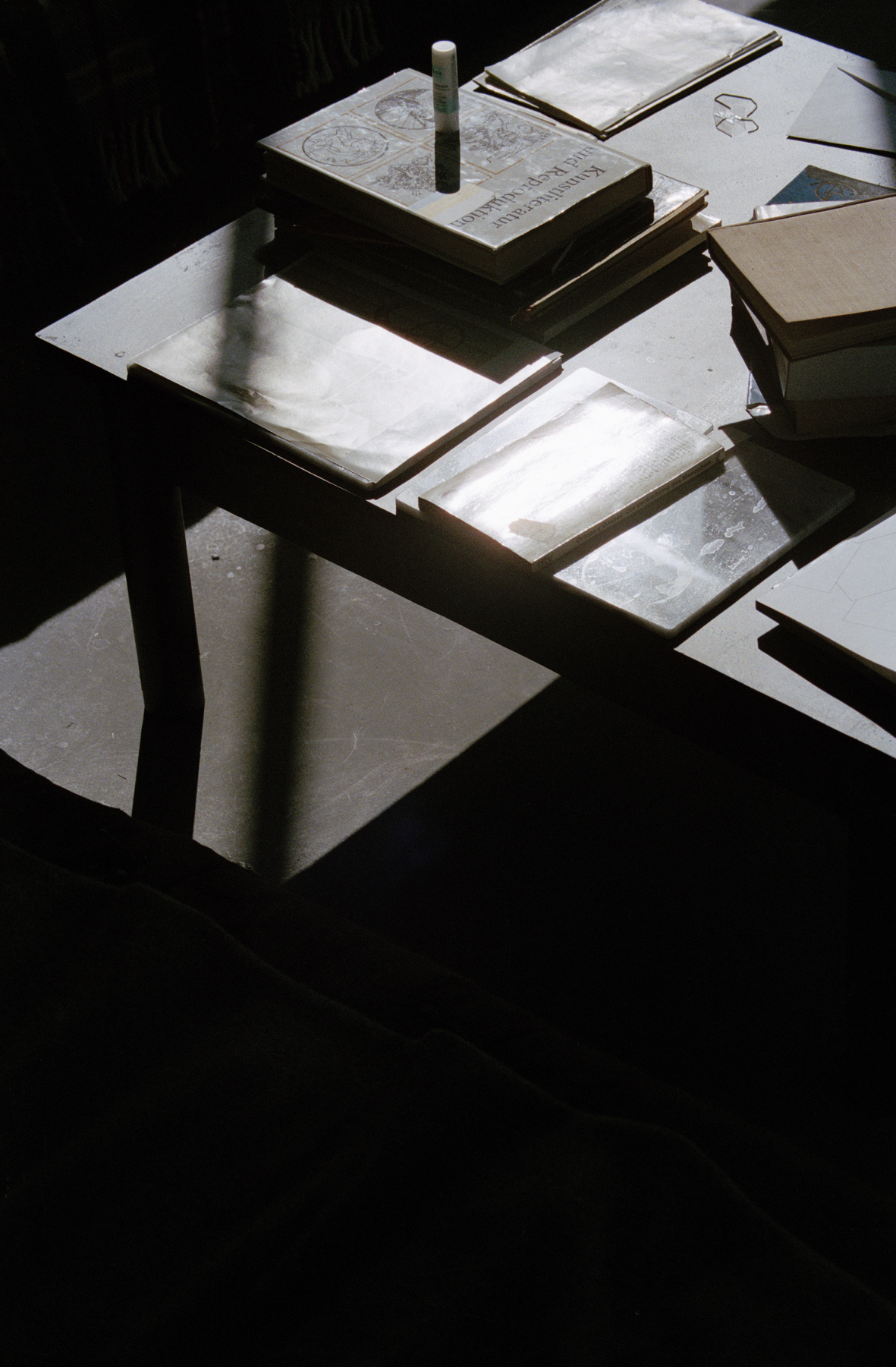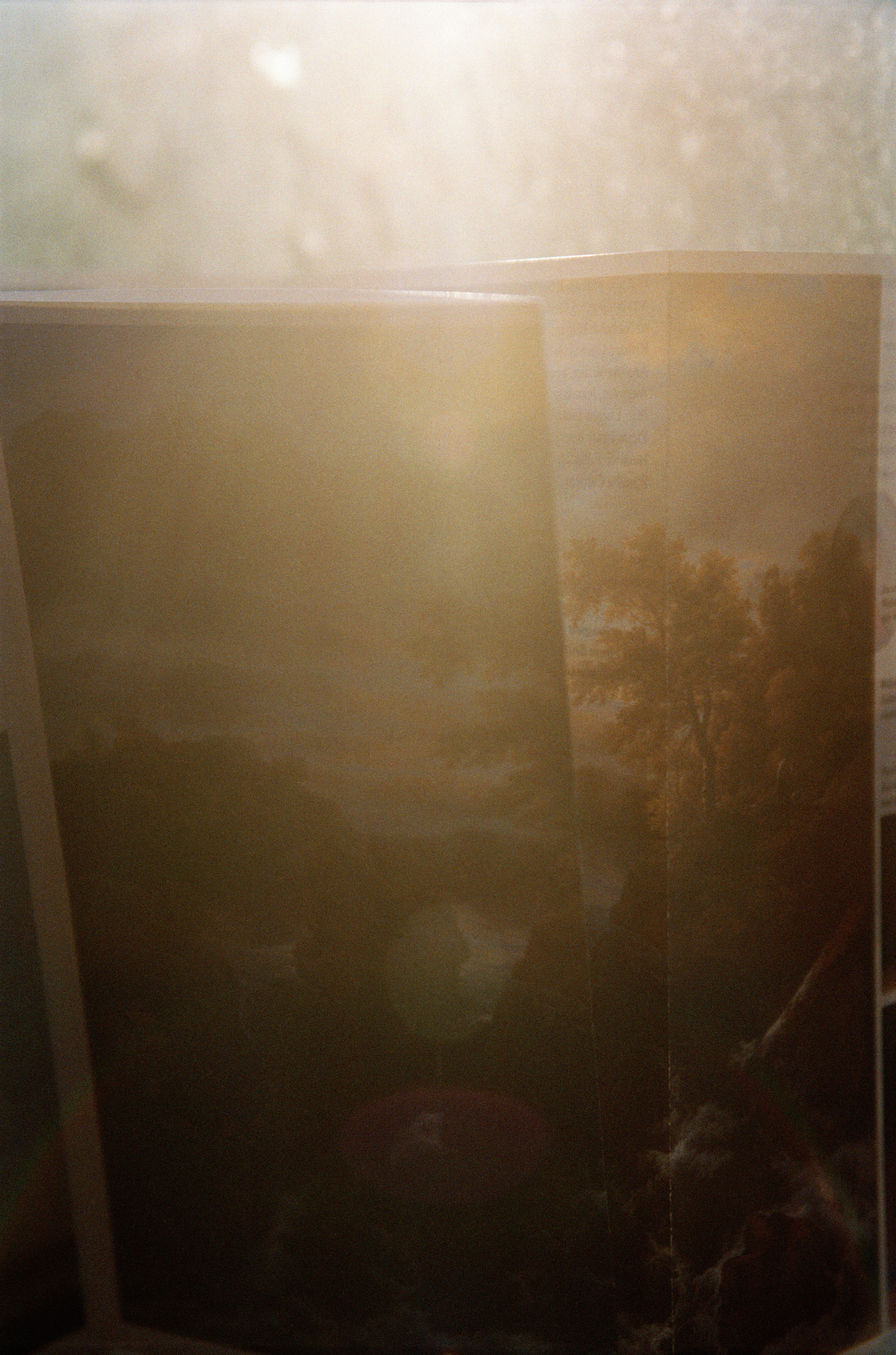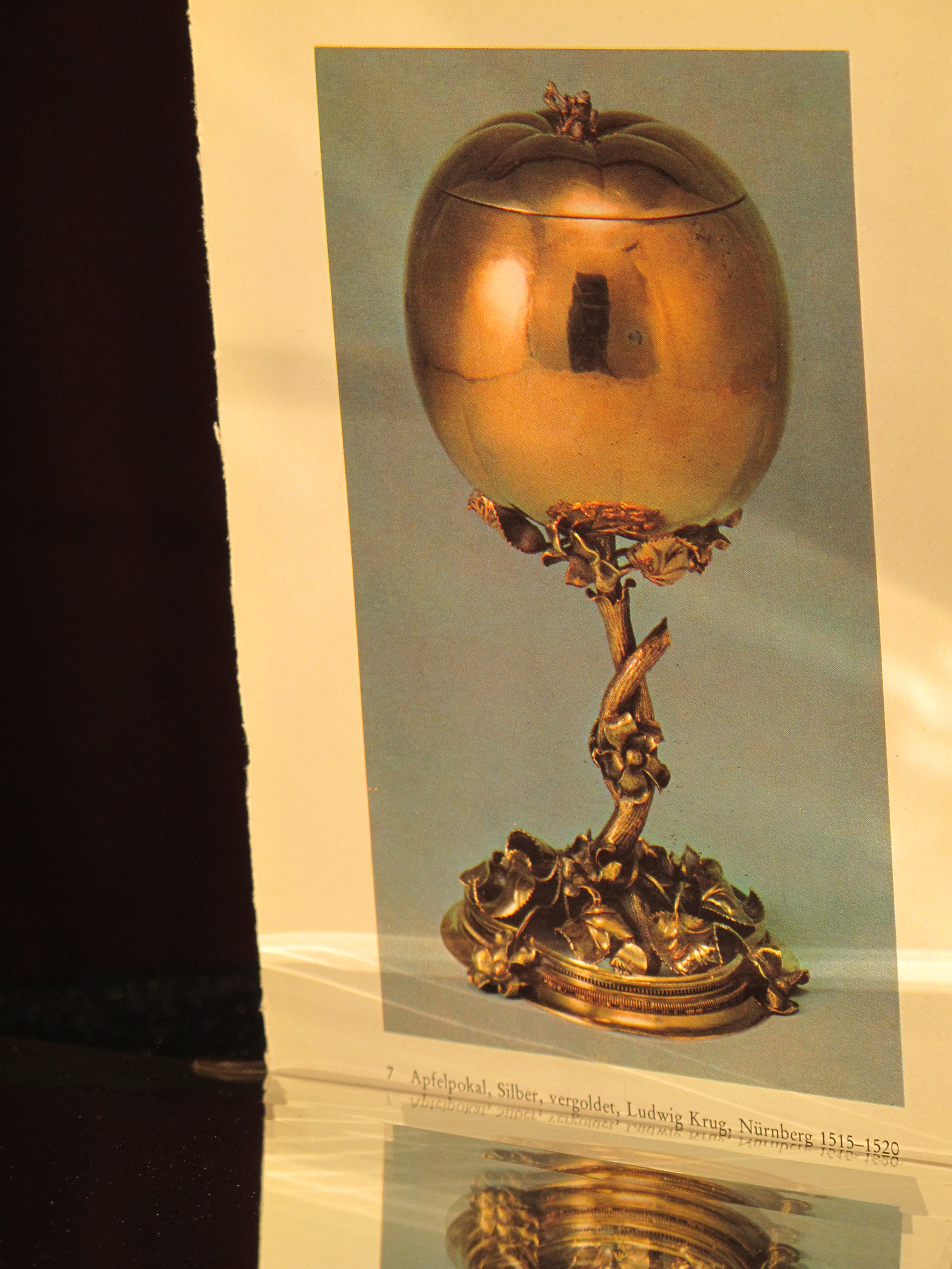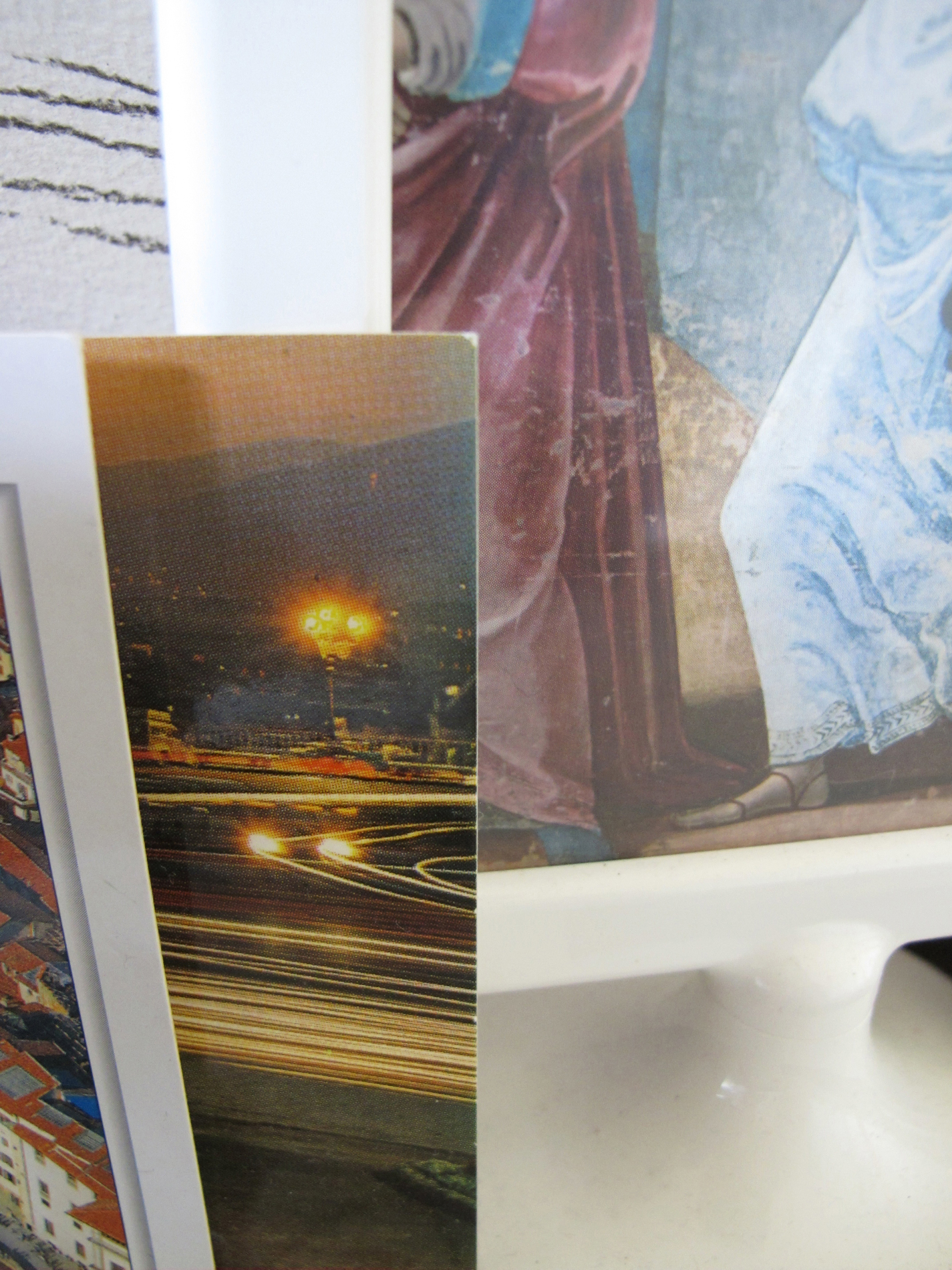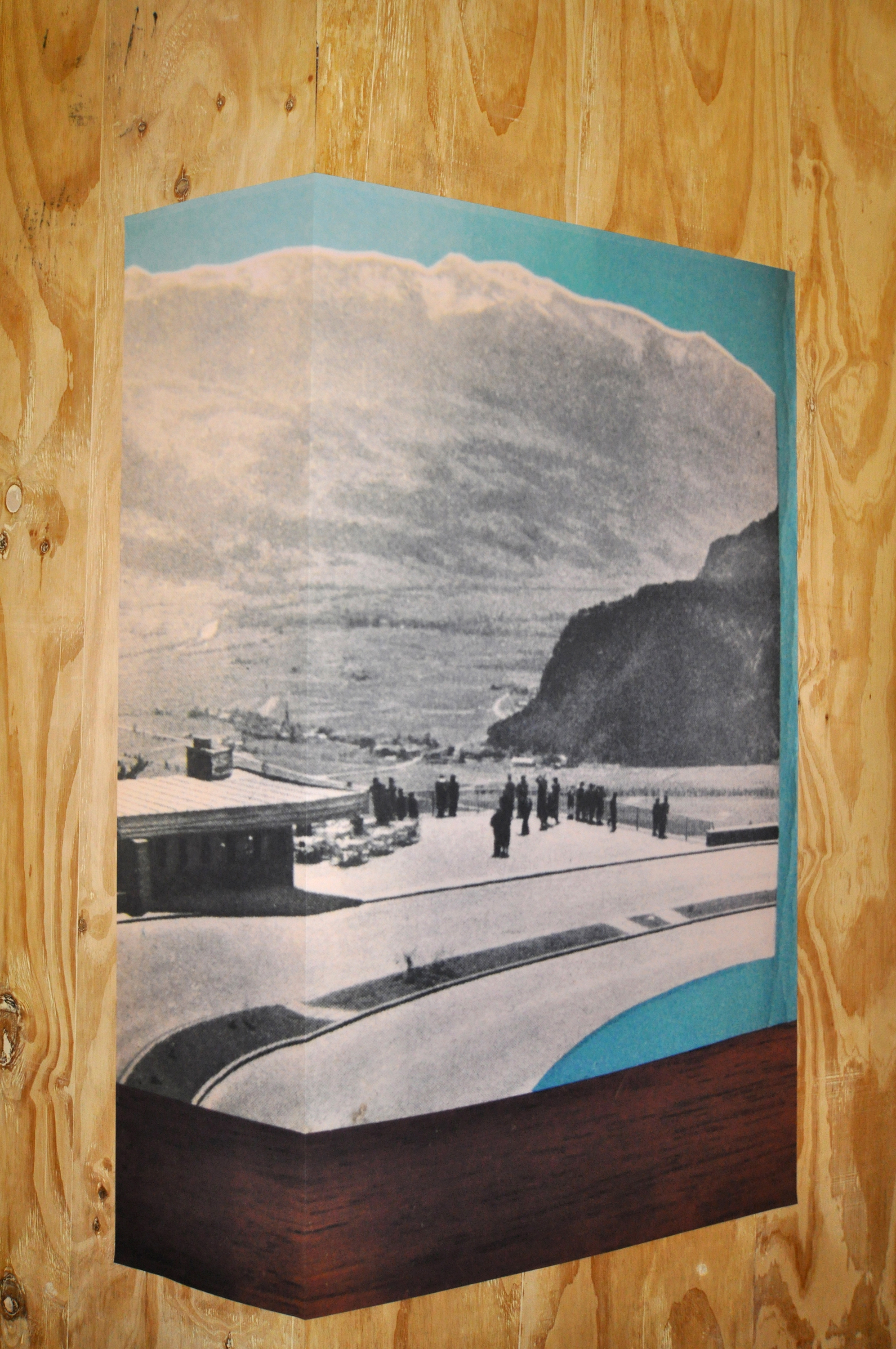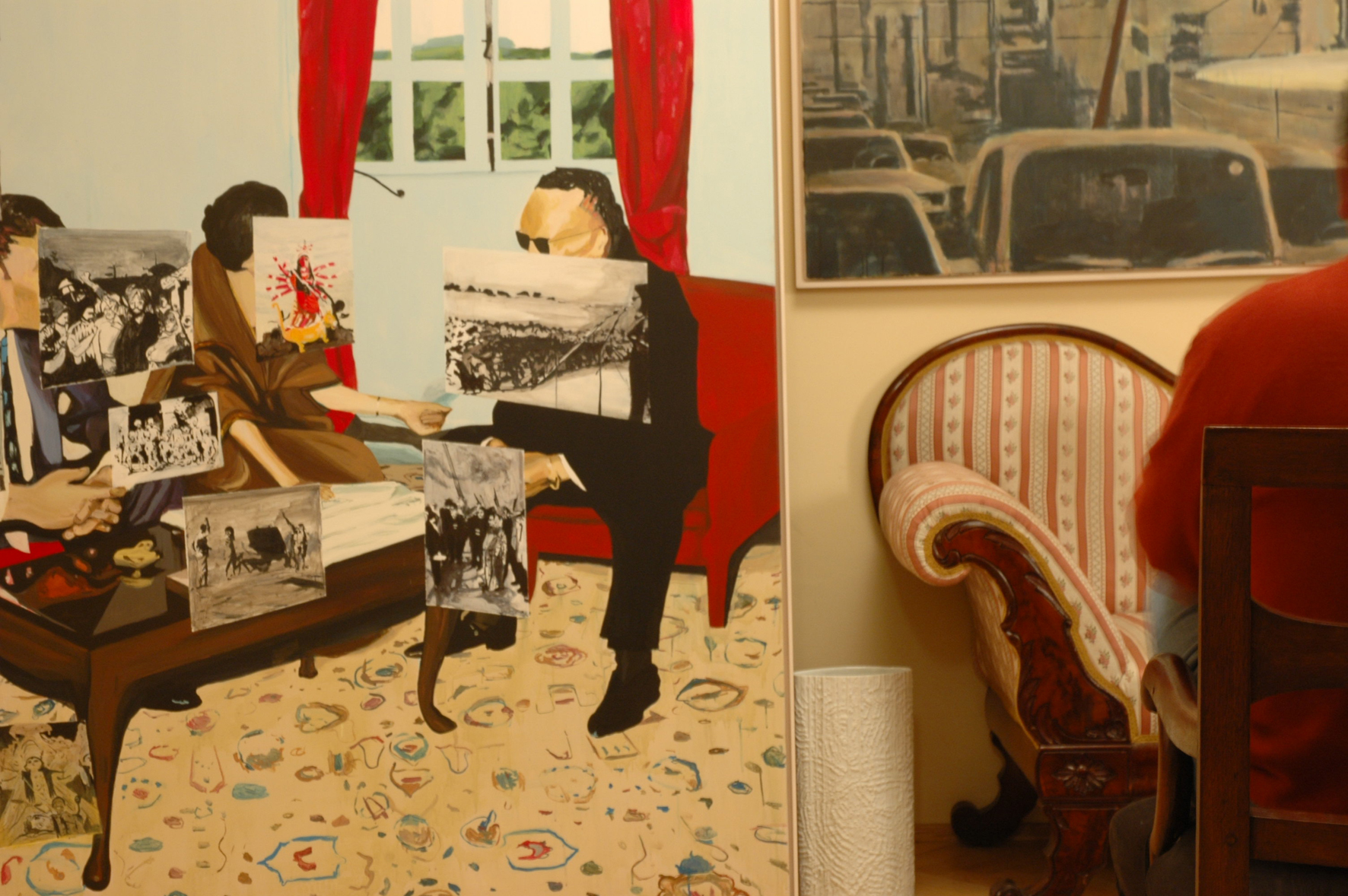![]()
"Let's talk about the Bildungsbüger“, 2014, IMG_1204/5.Juni2014 10:08, 2014
“The German ‘Bildungsbürger’ by contrast is still alive and well. You can find him, or her, everywhere. In the theatre, mid-week, when no Englishman leaves his television set, you can hear serious analysis during the break. Because the German is not ashamed to be serious.
Now that is something Germany could export in these times of crisis.”
- Roger Boyes, “Still Alive and Well: the German ‘Bildungsbürger’,” Goethe Institut, March 2009, online at: goethe.de.
Here, we are confronted with an image of the artist holding a photographic advertisement by the Goethe Institut, portraying the red-painted hands of a woman embracing an elegant alabaster bust of Johann Wolfgang von Goethe, rendered in the style of classical Greco-Roman sculpture. Reflecting on the bust alone, one is reminded of the reverence to Greek sculpture by Goethe’s teacher, Johann Joachim Wincklemann, for whom the noble and masculine grandeur embodied by Greek sculpture symbolized an imaginary moment of harmonious balance in the polis, wherein political and cultural life were held tightly as one. During the height of German idealism, this image of political and cultural synthesis would influence a larger effort to solidify the dream of Bildung, of education and self-cultivation by the middle class, predicated on the German struggle for unification. And the Bildungsbürger, the high-minded, cultivated, educated class of elites came to fully embody and enact this German cultural identity, returning into the social world and free imperial cities to further disseminate their knowledge and sacred values.
One can’t ignore the juxtaposition of high and low cultures in this advertisement. Like many other institutions and programs that import and impose upon others their national cultural values under the guise of promoting cultural exchange, the ad seems to suggest that the Institut can keep up to speed with, and adapt to, contemporary life and its realities. But this openness functions only to the extent that the institution will open its doors of high culture and antiquated ideals to the visitor, whose task then is to retrieve, learn from, and emulate this valuable legacy regardless of any local context or experience. Indeed, Goethe himself was a major influence on the Bildungsbürger and for many today he continues to symbolize the epitome of high culture. And like the female hand resting on Goethe’s shoulder, we are taught to continue to embrace this outdated, corrective image of culture rooted in an exercise of recovery by the institutions that disseminate them to us.
What would it mean to reflect on one’s culture otherwise? An array of disparate objects are photographed and then rearranged in Christoph Westermeier’s works, but these juxtapositions do not function comparatively, nor do they privilege one form over the other. These is a strategy of decontextualization at work here; one not with the aim of recontexualization or projection as in the Bildungsbürger’s selective memory of culture and history, but one that recognizes the simultaneous instability and flexibility of the process of collecting, reassembling, and archiving. As such, the artist invites a rereading and reconsideration of the cultural imagery that surrounds us.
Seyma Bayram
*Read more
![]()
"H.o.T.", 20x30 cm, C-Print, 2013
![]()
"Grey“, 60x40, C-Print, 2013
![]()
"Snake“ 60x40, C-Print, 2013
![]()
"Research Material“, 60x40 cm, C-Print, 2013
![]()
"Sunbathing“, 60x40 cm, C-Print, 2013
![]()
"Seamless“, 60x40 cm, C-Print, 2013
![]()
“Chatterton” 60x40 cm, C-Print, 2013
![]()
“Avantgarden retrospektiv”, 60x40 cm, C-Print, 2013
![]()
“Studioline: das Fotohandbuch”, 60x40 cm, C-Print, 2013
![]()
"I want to hold your hand“, 60x50 cm, C-Print, 2013
![]()
“H&T”, 25x35 cm, C-Print, 2013
![]()
“RatW” III, 60x40 cm, C-Print, 2013
![]()
“RatW” II, 60x40 cm, C-Print, 2013
![]()
“RatW” I, 60x40 cm, C-Print, 2013
![]()
"Early Cut Out“, C-Print, 20x30 cm, 2013
![]()
"What happened to Furka-Oberalp", C-Print, 20x30 cm, 2013
![]()
Documentation: “Duroy”, Inkjet Print, stainless steal, 84x294 cm, 2012
![]()
"Magnificent Rockies III“, C-Print, 96 x 72cm, 2012
![]()
"Magnificent Rockies II“, C-Print, 96 x 72 cm, 2012
![]()
"Magnificent Rockies I“, C-Print, 96 x 72 cm, 2012
![]()
"Niello“, C-Print, 68 x 51 cm, 2012
![]()
"Mairac“, C-Print, 68 x 51 cm, 2012
![]()
"The Early Walnut Period“, C-Print, 40 x 30 cm, 2011/12
![]()
"Nancy, Pamela, Thomas, Diana, Unity, Jessica, Deborah“, Fine Art Print, 52 x 39 cm, 2011
The work „Nancy, Pamela, Thomas, Diana, Unity, Jessica, Deborah“ references the Mitford Family. The six Mitford-Sisters are know for their literature, but mostly for their correspondance between themselves, that has lead to a vast amount of letters. Their common-ground and comradery that – although having very different political views – kept the sisters together, becomes the conceptual subject matter in the image of a set of overlapping bracelets; in the connection of objects and words.
Extract from the text: “The early walnut periode”, Christina Irrgang, 2012
*Read more
![]()
„Blush“, Fine Art Print, 60 x 45 cm, 2011
![]()
"Covet“, Fine Art Print, 60 x 45 cm, 2011
![]()
"Torrentius“, C-Print, 56 x 42 cm, 2011
![]()
"Bollongier“, C-Print, 40 x 30 cm, 2011
![]()
"Studio Mirror“, C-Print, 96x72 cm, 2011
![]()
"Marschallhof“, C-Print, 96 x 72 cm, 2011
![]()
"Schlaf- und Wohnmaschine“, C-Print, 68 x 51 cm, 2011
![]()
"Cartoline III“ Inkjet Print, 112 x 84 cm, 2011
![]()
"Cartoline II“, Inkjet Print, 112 x 84 cm, 2011
![]()
"Cartoline I“, Inkjet Print, 112 x 84cm, 2010
![]()
"Achensee-Strasse“, C-Print, 75 x 50cm, 2010
![]()
"Heimatglocken in der Fremde 02.02., Normandy“, 112x84 cm, 2010
![]()
"Heimatglocken in der Fremde 02.02. Arizona“, 112x84 cm, 2010
![]()
"SPIEGEL“, C-Print, 60x40 cm, 2009
![]()
"Featuring“, 42x34 cm, 2009
![]()
"Cappertone“, 42x34 cm, 2009
![]()
"Blick in die Sammlung Philara“, C - Print, 40x25 cm, 2007
